![]()
![]()
![]()
Use LEFT and RIGHT arrow keys to navigate between flashcards;
Use UP and DOWN arrow keys to flip the card;
H to show hint;
A reads text to speech;
39 Cards in this Set
- Front
- Back
|
A huge cloud of simple matter held together by gravity. The first complex entity in the Universe, has structure, stability, and sustained energy flow due to nuclear fusion at its center.
|
Star
Turbulence in the sky that makes the stars appear that they are blinking |
|
|
A large, chemically complex object orbiting a star.
|
Planet
Planets are divided into two types: Large gas giants and Rocky terrestrial planets |
|
|
The process by which planets form as material orbiting some stars gathers together through collisions and gravitational or electrostatic attraction, eventually forming larger and larger bodies.
|

Accretion
|
|
|
The third planet from the Sun in our Solar System, home to many complex life forms and modern human society.
|
Earth
Of all the planets in our solar system, the Earth has the greatest density |
|
|
A planet outside of our Solar System.
|
Exoplanet
Most exoplanets can only be detected indirectly because bright light from the stars that they orbit drowns them out |
|
|
The action or process of becoming not alike
|
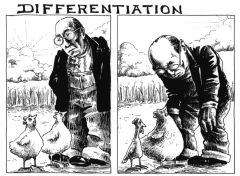
Differentiation
|
|
|
the area in space influenced by the gravitational pull of a single star or star systems
|

Solar System
|
|
|
The mixture of gases surrounding a planet, a critical factor in the development of life on Earth.
|
Atmosphere
Atmosphere is made of 4 layers: troposphere, stratosphere, mesosphere and thermosphere |
|
|
The dense center of the Earth formed by differentiation. Large quantities of iron and nickel generate the Earth's magnetic field
|
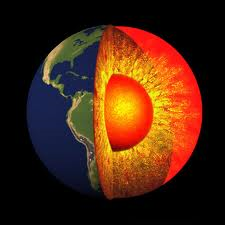
Core
|
|
|
The outer layer of the Earth, consisting of moving plates. The Earth's crust was formed through the process of differentiation
|
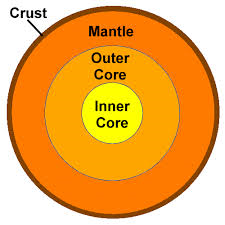
Crust
|
|
|
The semi-molten layer of the Earth between the core and the crust. Convection currents in the mantle drive plate tectonics.
|
Mantle
It is the biggest and takes up 84 percent of the Earth |
|
|
The idea, a foundational concept of plate tectonics, that the Earth's continents move in relation to each other and had once formed a supercontinent called Pangaea.
|
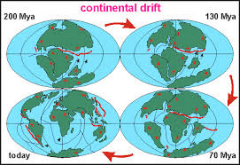
Continental Drift
|
|
|
The concept that the Earth's crust consists of separate plates in constant motion; a central idea of modern earth sciences (geology) since the 1960s.
|

Plate Tectonics
|
|
|
The portions of the Earth's surface or crust that move as a result of movements in the hot, semi-liquid magma beneath them.
|
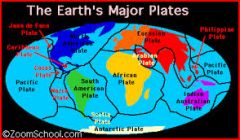
Tectonic Plates
|
|
|
The use of four strategies to decide whether a story or concept should or should not be trusted. The four strategies are intuition, authority, logic, and evidence
|
Claim Testing
I need help finding a wow factor.. thanks |
|
|
An extremely long period of time on the geologic time scale.
|
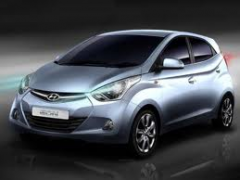
Eon
|
|
|
The second eon in Earth's history, a time from 3.8 to 2.5 million years ago, during which the first living organisms appeared.
|
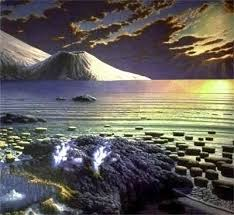
Archaen Eon
|
|
|
The average distance between the Earth and the Sun, equal to about 92,955,807.3 miles or 149,497,870.7 kilometers.
|
Astronomical Unit
1 Astronomical Unit =149 597 871 kilometers |
|
|
The billions of years of the Earth’s geologic history.
|
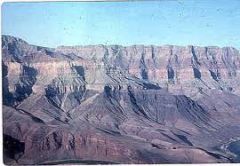
Deep Time
|
|
|
The scientific study of the Earth including its composition and history
|
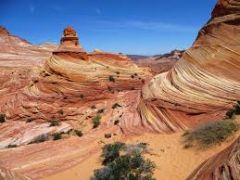
Geology
|
|
|
the science dealing with the areal differentiation of the earth's surface
|
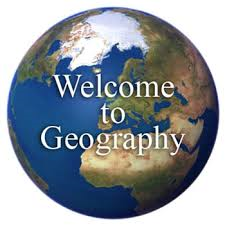
Geography
|
|
|
Degrees of magnification, or perspective, used to measure time, space, and size.
|
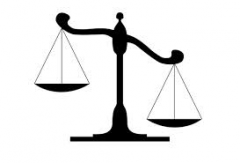
Scale
|
|
|
An object, smaller than a planet, that was shaped by accretion during the formation of the Solar System.
|
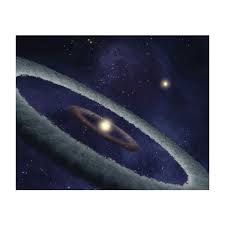
Planetesimals
|
|
|
small bodies orbiting the Sun
|
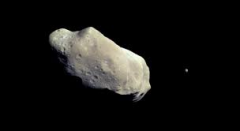
Comets Asteroids
|
|
|
Identify three types of tectonic plate movement
|
Divergent- Two plates move away from each other
Convergent- Collision of two plates Transform- Two plates slide by one another |
|
|
Identify two types of crust
|
Continental Crust: thick, lightweight crust under landmasses.
Oceanic Crust: thin, heavy crust under the seafloor. |
|
|
Identify the chemical abundances of the universe
|
Hydrogen (75%) Helium (23%)
|
|
|
Identify the chemical abundances of earths crust
|
Oxygen (46%) Silicon (27%) Aluminum (8%)
Iron (6%) Calcium (5%) Magnessium (3%) Sodium (2%) Potassium (2%) |
|
|
Identify the chemical abundances of the sun
|
Hydrogen (75%) Helium (23%) Oxygen (1%)
|
|
|
Describe the conditions of early earth
|
lots of radiation,
|
|
|
What does the core consist of?
|
Nickel and Iron
|
|
|
What does the mantle consist of?
|
light semi molten rocks
|
|
|
What does the crust consist of?
|
Very light rocks such as basalts and granites
|
|
|
What was the young earth like?
|
molten lava
no oxygen asteroids and meteorites all over the place high levels of radiation |
|
|
A person who produced evidence in 1912 that the continents are in motion, but because he could not explain what forces could move them, geologist reflected his ideas
|
Alfred Wegner
|
|
|
A person who confirmed Wegner's ideas by using the evidence of seafloor spreading to explain what moved continents
|
Harry Hess
|
|
|
This person compared the position of the sun's rays in two locations to calculate the spherical size of the Earth with reasonable accuracy
|
Eratosthenes
|
|
|
Name the three eons with the years
|
1.Hadean- 4.5b years ago until 4b years go
2. Archean and Proterozoic - 4b years ago until 500 million years ago |
|
|
eons
areas periods |
the time
|

